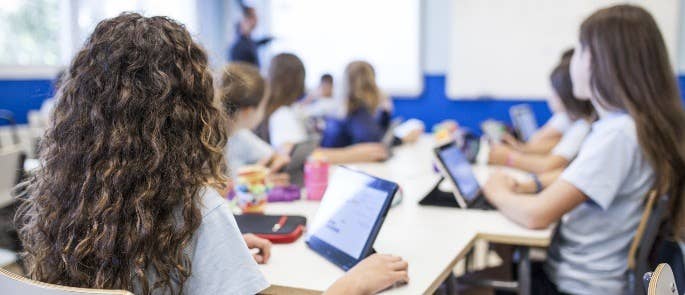
Asking questions is essential for checking pupil understanding and keeping them engaged with the task at hand. It’s crucial to the way students receive and process information and it encourages independent and critical thinking. Statistics show that the average teacher asks between 300 and 400 questions per day. To have the desired effect, these questions need to be effective, well-considered, and challenging.
Effective questioning involves using questions in the classroom to open conversations, inspire deeper intellectual thought, and promote student-to-student interaction. Effective questions focus on eliciting the process, i.e. the ‘how’ and ‘why,’ in a student’s response, as opposed to answers which just detail ‘what.’ Using them in the classroom creates opportunities for students to analyse their own thinking, that of their peers, and their work.
Using effective questioning in your classroom brings a host of benefits, as it:

There are two main types of questions that are used in the classroom: closed questions and open questions.
Closed questions are those that prompt a simple response, such as yes, no, or a short answer. Examples include:
There are many advantages to closed questions. They’re quick and easy to respond to and generally reduce confusion. They’re also particularly useful for challenging pupils’ memory and recalling facts.
There are, however, also a number of disadvantages to using closed questions. Students may start to try and guess what you’re thinking and give an answer based on that. They may also become anxious that they’re going to get the answer wrong, which reduces their willingness to answer. Closed questions limit the child’s opportunity to expand on an answer and provide reasoning or opinion.

Open questions, on the other hand, are those that require a deeper level of thinking and often prompt a lengthier response. They ask students to think and reflect, provide opinions and feelings, and take control of the conversation. Examples of some open questions includes:
Open questions are advantageous because they enrich the learning experience by encouraging individual thinking. They also give you, as a teacher, the opportunity to check your pupils’ understanding and knowledge, and assess their ability to apply this knowledge.
For questions to be productive, you need to implement them effectively. Here are some tips to do so:
Rather than having students volunteer to answer questions, you should offer the question to the entire class and then pick a pupil to answer. Make students aware of the fact they may be called upon so they can begin to think through and prepare their answer. If pupils are aware that you may select them, there’ll be much higher levels of engagement.
A wait time refers to the amount of time you wait from asking a question to when a student speaks. This time gives students time to think and rehearse their answers before speaking up. As a result, you’ll see improvements in student retention, more considered and lengthier answers, and higher levels of student-to-student interaction. Students failing to respond will also decrease.
To achieve the best results, try to wait three seconds and be patient.
When you’re creating your lesson plans, consider what type of questions you want to ask. Plan which parts of content you want to ask about and when you’re going to ask them, then write them down. This will help you to keep the lesson on track and achieve your desired learning outcomes.
Open and closed questions are both beneficial for different purposes. While open questions give students the opportunity to provide detail and reasoning, closed questions are useful for quick fact checks and moving the lesson forward.
Therefore, you should vary your questions and use both open and closed questions depending on your reason for asking. For example, if you want to quickly check that a student has remembered a fact, ask a question like “Louise, who was the King of France when the Industrial Revolution began?”.
Conversely, if you want a student to provide their thoughts on something, and initiate a class discussion on a certain topic, use an open question like “Ben, what do you think the West Egg and East Egg signify in The Great Gatsby?”.
Using questions to check pupil understanding is always beneficial. However, getting students to ask each other questions is also incredibly beneficial. This gets all students involved and thinking: the students who ask questions will be thinking about what to ask, and those who are asked will have to formulate an answer.

Prepare a good stock of follow-up questions that you can use if you want a student to expand on their answer. For example: “What makes you think that?” “How do you know that?” and “What if …?”. These extend responses and propose a deeper level of thinking. Furthermore, asking questions like “How did you reach that conclusion?” makes students work through their decision-making process.
At the beginning of a lesson, ask students in groups what they would like to learn more about or if there’s any confusion they need you to clear up. This will help to stimulate their interest and allow you to assess what they already know about a topic. It will also get them to challenge their own thinking and consider what they know.
Every contribution is valuable, even if the answer isn’t necessarily correct. Show appreciation for any answer and offer appropriate praise based on the quality of answer.
If a student answers incorrectly, use a follow up question such as “What made you think that?”. This gives students the opportunity to think through their thought process and allows you to address any confusion.
Effective questioning is a great method for getting students to think critically and independently and for you to discover any misunderstandings. Once you start using it in your classroom, you’ll quickly notice the difference in engagement and will keep lessons productive and beneficial to all.